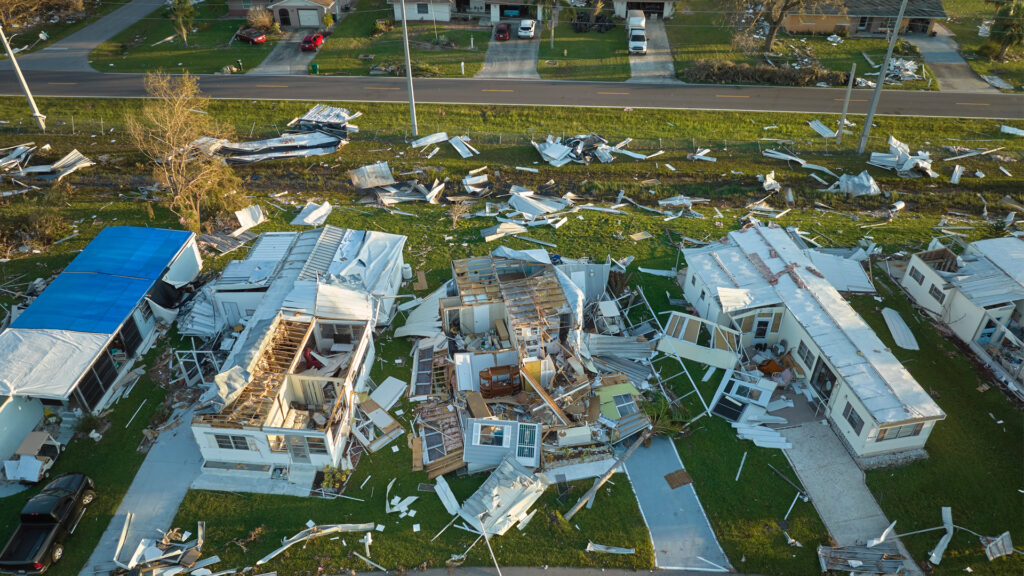By Kate Stein, WTW
Floridians are well aware that homeowners insurance costs have risen significantly. The state’s average premium is $4,200, triple the national average; state data shows many homeowners pay much more. Some private insurers are withdrawing from Florida entirely, due to their view of the business environment, leaving property owners to scramble for coverage from Citizens Property Insurance, the state-run insurer of last resort, or to forgo property insurance entirely.
This isn’t happening randomly. Insurers are raising prices because it’s getting riskier and more expensive for them to provide insurance. It’s incorrect to attribute these rising risks to climate change alone: inflation, Florida’s legacy of insurance-related litigation and ongoing construction in hurricane-vulnerable coastal areas also all have played major roles.
But it would benefit the insurance industry and Floridians alike if insurers, reinsurers, insurance brokers and industry consultants would think more about climate change — in particular, how the insurance industry can help Florida build physical and financial resilience, and the value for both insurers and Floridians of taking a collaborative approach to tackling climate risks.
Climate change is influencing property risk

Insurance is essentially a promise: If something goes wrong for a property owner who has insurance, their insurer will provide a payout to help make things right again. In exchange for this promise, and the peace of mind it provides, the property owner pays the insurer a premium. Insurers set premiums based on a number of factors, including the value of the property they’re insuring, its design and the materials it’s made from, and the frequency and potential severity of the hazard it might face.
Climate change is disrupting insurers’ calculus. Hotter ocean temperatures and warmer air are strengthening hurricanes, increasing potential damage to the homes and businesses that insurers are on the hook to cover. Industry models and data used to estimate losses and set premiums are not yet able to fully capture the ways in which climate change is changing risk.
Simultaneously, climate change is intensifying extreme weather globally, meaning that many of the same insurance companies who face growing risks in Florida also must contend with greater risks in other geographies. In exchange for taking on more risk, insurers charge more.
Collaboration to reduce risk for communities can also benefit the insurance industry
Most companies in the insurance industry are private, meaning they have no formal obligation to ensure that Floridians can continue to access affordable insurance for their homes and businesses. But by helping Florida communities navigate intensifying climate-related risks, the insurance industry could also help itself. For example:
- When property owners invest in measures to protect their properties against hurricanes and floods, it benefits the insurance industry, too. Already, insurers are legally required to provide discounts to Florida homeowners who have made property improvements that reduce the effects of severe wind; some also run marketing campaigns encouraging homeowners to take steps such as installing windproof windows and roofs, trimming trees and installing flood vents. Could insurers offer other types of credits to promote physical resilience of homes and businesses? Is there a way for them to support communities or the state in infrastructure investment that reduces climate-related risk? Where all else fails, can the insurance industry be a partner in difficult conversations about relocation away from the highest-risk areas?
- Data is critical for insurers to make decisions about what risks to take on, and what premiums to charge for those risks. Simultaneously, data is essential for local governments and the state of Florida to develop strategies for investing in adaptation. Could insurance industry actors and governments collaborate on data gathering and analysis? Can industry models be enhanced to ensure pricing reflects risk reduction efforts taking place at the property and community level?
- Citizens is one of dozens of “protection gap entities” around the world that bring together government and the insurance industry to try to figure out how to provide affordable insurance coverage. Could Citizens explore alternative insurance approaches that have succeeded in other geographies, including New York City?
- Many insurance organizations have made public commitments on environmental and social sustainability. Collaboration with communities can help them fulfill these commitments and reduce reputational risks.

In Florida and around the world, the impacts of climate change and extreme weather are increasing exponentially, in ways that create new risks or exacerbate existing ones for both communities and the insurance industry. To avoid the worst effects, both Florida communities and the insurance industry must recognize the ways in which their risks are interdependent, and commit to collaborating on solutions.
Kate Stein manages relationships with insurers for WTW, a global insurance broker and consultancy. She previously worked as resilience officer for the town of Surfside, Florida, and in the City of Miami’s Office of Resilience and Sustainability. Kate began her career as a climate and environmental journalist at WLRN in Miami.
If you are interested in submitting an opinion piece to The Invading Sea, email Editor Nathan Crabbe at ncrabbe@fau.edu. Sign up for The Invading Sea newsletter by visiting here.



